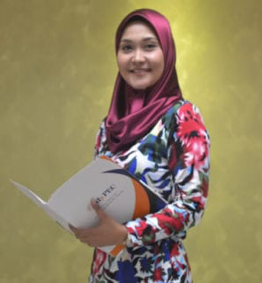
The human population has increased significantly in recent years, and it is anticipated to reach 9 billion in 2050. With such growth, consumption of natural resources is also likely to rise to 170 percent of the earth’s bio-capacity, leading to environmental degradation. Consumption naturally pollutes the environment; therefore, degradation accelerates. When we think of pollution, we often associate it with coal power plants, raw sewage pipes, and oil and gas industry, without considering the clothing on our backs. The fashion industry is already the second largest contributor to the global pollution. This is undeniable, given that fashion is a complex business involving immense production, distribution, consumption, and disposal processes. Each stage of the circular value chain in the fashion industry causes significant environmental damage.
In Malaysia, studies on sustainable fashion have revealed massive pollutions affecting water, environment and air. According to the Ministry of Energy, Science, Technology, Environment and Climate Change (MESTECC), water pollution in Malaysia is rising at an alarming rate, with the number of polluted rivers increasing from 158 in 2015 to 349 in 2019. Wastewater of textile finishing caused almost 22 percent of pollution, and 70 million trees were cut down to make fibers for clothing. Furthermore, textiles accounted for 4 percent of total municipal solid trash in Malaysia, with an estimated 2,000 tonnes generated each day, while a single cotton t-shirt takes around six years to degrade. The total amount includes fabrics that were left unused during the production process and were thrown away, eventually ending up in landfills. In terms of air pollution, the textile industry is predicted to produce 2.8 billion tonnes of carbon dioxide (CO2) per year by 2030. Above and beyond that, customers impulsively acquire collections for each season, adding to increase dumping and wastage of clothing. When the materials used in a fashion product are not sustainable and durable, the situation deteriorates.
Notably, the industry must shift to higher added-value, more responsible products, adopting a concept known as sustainable fashion. The advent of sustainable fashion or apparel item is predicted to minimise consumption because the product is made of sustainable and high-quality materials, has a timely style, and, most significantly, has a low environmental impact. However, the market for sustainable fashion in Malaysia has not progressed as rapidly as expected since retailers need to understand a wide spectrum of consumers in order to be very lucrative while reducing the negative impact of fashion products on the environment. To address this issue, a group of sustainability marketing academics led by Dr. Zuraidah Sulaiman, assisted by Dr. Nornajihah Nadia Hasbullah and Dr. Adaviah Mas’od, conducted a study to find the drivers that motivate Malaysian consumers in purchasing sustainable apparel. The researchers draw on insights from Motivation Opportunity Ability Theory and Self-Determination Theory. A quantitative research approach using a 2 x 2 experimental design was employed to test the motivational drivers in four different purchase situations. A survey questionnaire was distributed to 300 Malaysian millennials aged 22 to 36 who resided in metropolitan areas. To test the research hypotheses, partial least squares-structural equation modelling was used.
Sustainable Fashion Movement in Malaysia
Recycled, organic, vintage, vegan, artisan, locally created, custom-made, and fair-trade certified are just a few of the terms used to label sustainable fashion. Sustainable fashion also includes clothing with little or no dye processing, as well as clothing with environmentally friendly labelling or packaging. Second-hand fashion can also be termed as sustainable because it is concerned with resource conservation. In addition, the willingness to wear garments for a longer period of time and buying less clothes are considered sustainable practices.
Intriguingly, the sustainable fashion trend has not been limited to Western markets, but has spread to Asia, Latin America, and Eastern Europe as well. The growth of this fashion trend in Malaysia is being aided by a number of policies and action plans, including those by MATRADE, the 17 Sustainable Development Goals (SDGs) by the United Nation, Dasar Kemakmuran Negara 2030 (Shared Prosperity Vision 2030), Fashion Revolution, World Wildlife Fund (WWF), the Council of ASEAN Fashion Designers (CAFD) and importantly by fashion movers, entrepreneurs, manufacturers, and producers.
The future of fashion industry in Malaysia seems promising when many producers and designers have started to join this niche market of sustainable fashion. Local fashion brands like Ultra, Real. M, Mell Basics, Kanoe, Zibossa, Tihara Nukleus Apparel, Nuno Organic, Kooshboo, Munimalism, Kova Sport, Pearly Wong Collection, and Sayang Collection are pioneers in green collections and environmentally non-hazardous material use. These brands have been established in Malaysia and used innovative materials, such as organic bamboo, soy fibre, organic cotton, recycled polyester, and chiffon. The companies are paying closer attention to the raw materials and procedures required at each stage of their supply chains to ensure that they are indeed sustainable. In terms of colouring and dyeing, the companies prefer eco-friendly and natural dyes made from herbs and plants in order to prevent affecting the environment during the raw material preparation process or during the consumption time. Simultaneously, customers are encouraged to recycle their old clothing.
Nonetheless, more interventions from all stakeholders in the clothing sector, including retailers, designers, and policy-makers are required to increase the availability of sustainable apparel in the Malaysian market. After all, whether sustainable practitioners champion pressing environmental issues or the human rights movement, the final outcome will always return to the customers with whom they first connected.



About the authors:
Dr Zuraidah Sulaiman is an interdisciplinary researcher and teacher who is keen in consumer decision-making process within the digital and social media environment, as well as in green and sustainable consumption. For more information about her research and publication, visit https://business.utm.my/zuraidah/
Dr Adaviah discipline expertise lies in social marketing, consumer behaviour, and marketing teaching. She works across various social change initiatives specifically on environmental sustainability and behavioural changes research. Please visit https://business.utm.my/adaviah/ for more information.
Dr Nornajihah is currently working as a senior lecturer at UiTM Bandaraya Melaka. She received her PhD in Management from Universiti Teknologi Malaysia (UTM Johor Bahru). Her research interest include sustainable marketing, green marketing and consumer behaviour.

